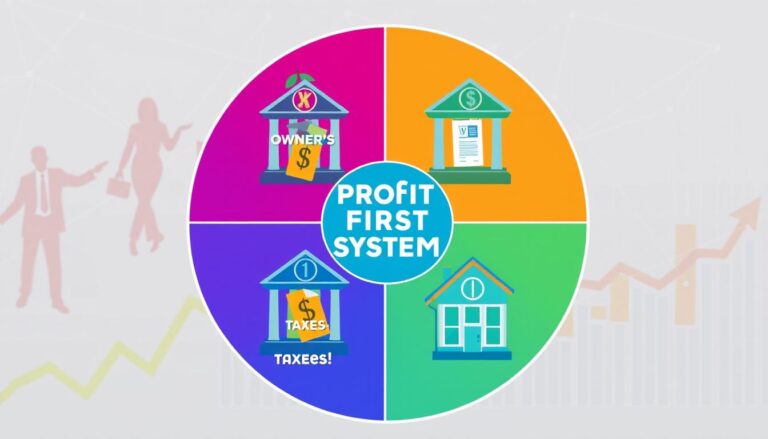Master E-commerce SEO: Strategies for Online Success
The digital marketplace demands strategic online store SEO to stand out. With 86% of e-commerce website traffic coming from Google, knowing ecommerce search engine optimization is key. It’s not just helpful—it’s essential for survival.
Your online store’s success depends on effective SEO for e-commerce. Organic traffic accounts for about 33% of site visits. This makes search visibility crucial for digital entrepreneurs. By using targeted optimization techniques, you can boost your online presence and draw in more potential customers.
Modern e-commerce needs a smart approach to search rankings. Professional SEO strategies use tools like Google Search Console and Google Analytics. These tools help you track performance, understand user behavior, and improve your digital marketing.
Table of Contents
Understanding the Foundations of E-commerce SEO
E-commerce SEO is key for online stores wanting to be seen more. Google gets 43% of all online shopping traffic. Knowing how to optimize your site can really help your business grow.

Search engines are smart at matching shoppers with stores. They use complex algorithms to figure out which sites are the best.
The Role of Search Intent in Online Shopping
Search intent is what makes product listings work. When people search online, they usually have a goal:
- Informational searches looking for details
- Navigational queries for specific brands
- Transactional searches ready to buy
- Comparative searches to compare options
How Search Engines Process E-commerce Sites
Good ecommerce keyword research means knowing how search engines see sites. Google’s smart algorithms look at many things:
| Ranking Factor | Impact on SEO |
|---|---|
| Page Load Speed | Very important for user experience |
| Mobile Responsiveness | Very important for today’s browsing |
| Content Relevance | Helps with organic search rankings |
Key Ranking Factors for Online Stores
Shopping cart SEO needs a full plan. Top e-commerce sites focus on:
- Comprehensive product descriptions
- High-quality images
- Customer review integration
- Technical website optimization
Effective SEO makes your online store stand out.
By grasping these basics, you can build an e-commerce plan that draws in, keeps, and converts customers.
Keyword Research and Implementation for Online Stores
Mastering ecommerce keyword research is key to digital success for online stores. Your keyword strategy helps you connect with potential customers. It’s about finding the right words for those searching for products online.

Understanding your target audience’s search habits is the first step. By doing deep keyword research, you learn what customers want and need.
“Keyword research is not just about finding words, it’s about discovering customer intentions.”
- Identify target audience search patterns
- Analyze search volume and competition
- Focus on long-tail keywords with higher conversion potential
- Integrate both branded and non-branded keywords
Marketplace SEO needs a smart keyword plan. Here are some tips to boost your online presence:
| Keyword Strategy | Impact on Search Performance |
|---|---|
| Long-tail keyword targeting | Higher conversion rates |
| Competitor keyword analysis | Identifying market gaps |
| User intent alignment | Improved search rankings |
Remember, only 0.63% of users click on second-page search results. A good keyword strategy can make a big difference. It can improve your visibility and bring more targeted traffic to your store.
Technical SEO Optimization for E-commerce Platforms
Successful ecommerce search engine optimization is more than just creating content. Technical SEO is the core of your online store’s success. It makes sure your site meets the complex needs of today’s search engines.
Your online store’s technical setup is key to its search visibility. With over 26.5 million ecommerce sites online, standing out is a challenge. A smart approach to shopping cart SEO is essential.
Site Architecture and Navigation
Building a user-friendly website structure is vital. It helps both users and search engines. Here are some important navigation tips:
- Keep site depth to three clicks or less
- Implement breadcrumb navigation
- Create clear, logical category hierarchies
- Use internal linking strategically
Mobile Optimization Essentials
Mobile optimization is a must, not a choice. With 50% of shoppers aged 30-49 buying on their smartphones weekly, your site needs to work well on mobile.
“Mobile-first indexing means your mobile site is the primary version Google evaluates for rankings.”
Page Speed and Performance Metrics
Fast page loads are crucial for conversion rates. Search engines favor sites that offer quick, smooth experiences.
| Performance Metric | Impact |
|---|---|
| Page Load Time | Direct correlation with bounce rates |
| Mobile Responsiveness | Critical for search rankings |
| SSL Certificate | Enhances trust and search visibility |
By improving these technical SEO areas, you’ll build a strong base for your online store’s search performance.
Product Page Optimization Strategies
Mastering product listing optimization is key for your online store’s success. Your product pages are vital for turning visitors into customers. They are the heart of e-commerce SEO.
Effective strategies can boost your online store’s SEO. Here are some important tips:
- Create unique, descriptive product descriptions
- Implement strategic keyword placement
- Optimize image alt texts
- Use clear, compelling product titles
- Leverage structured data markup
When writing product descriptions, aim for genuine value. Detailed, helpful content helps customers and search engines see your relevance.
“20% of your product categories may drive up to 80% of your revenue” – E-commerce Performance Insight
URL structure is crucial for product page optimization. Make URLs:
- Descriptive
- Easy to read
- Consistent
- Brief
- Lowercase
Your meta descriptions should be 70-155 characters long. They should capture the product’s essence and encourage clicks.
| Optimization Element | Best Practice |
|---|---|
| Heading Structure | H1 for product name, H2 for features/specs |
| Image Optimization | Descriptive file names, relevant alt text |
| User-Generated Content | Incorporate customer reviews |
Optimized product pages improve user experience and search rankings. They help you rank for specific, high-intent searches.
seo for e commerce: Essential Best Practices
Mastering SEO for e-commerce needs a smart plan. It mixes technical skills with making things easy for users. Your store’s success depends on using top ecommerce SEO methods. These methods boost organic traffic and help sell more.
On-Page SEO Elements
Creating great on-page elements is key for your e-commerce site. Here are some important tips:
- Create unique, descriptive product titles
- Develop detailed product descriptions
- Use relevant keywords naturally
- Optimize image alt tags
Content Strategy Development
Your content strategy should be more than just product descriptions. Make informative blog posts, buying guides, and customer resources. These should meet specific user needs and search intents.
“Content is the bridge between your products and potential customers” – E-commerce SEO Expert
User Experience Optimization
Search engines love websites that are great for users. Here are some tips to improve:
- Ensure mobile responsiveness
- Improve site navigation
- Reduce page load times
- Implement clear call-to-action buttons
By using these key SEO practices, you’ll build a strong online presence. This will attract and convert potential customers well.
Building Authority Through Content Marketing
Content marketing is a strong way to boost your online store’s SEO and build trust. By making valuable, focused content, you can make your e-commerce site a leader in your field.
Your content marketing plan should tackle customer problems and show off your knowledge. Quality content is the base of your ecommerce SEO strategy.
“Content marketing is not about creating content, but solving your customers’ problems through strategic information delivery.”
Key ways to build your brand’s authority include:
- Writing detailed blog posts that answer customer questions
- Creating full guides and tutorials
- Making videos that show off your product knowledge
- Hosting webinars and expert interviews
To improve conversion rates, your content should:
- Give practical tips
- Show how your products help
- Build trust with clear info
- Show you know your industry well
Tracking your content’s performance helps you get better:
| Content Type | Engagement Rate | SEO Impact |
|---|---|---|
| Blog Posts | 65% | High |
| Video Tutorials | 72% | Very High |
| Expert Interviews | 58% | Moderate |
Regular, top-notch content makes your brand a go-to source. It brings in more organic traffic and boosts your online store’s search ranking.
Leveraging Customer Reviews and User-Generated Content
User-generated content (UGC) is a key tool in online store SEO. It changes how e-commerce businesses talk to customers and boost their SEO. By using real customer voices, you can make your online store more dynamic and trustworthy.
Review Management Strategies
Good conversion rate optimization starts with managing reviews well. Here are some important steps:
- Encourage customers to share their experiences
- Respond quickly to all feedback, good or bad
- Give discounts for detailed reviews
- Make it easy for customers to leave reviews
Social Proof Integration
Social proof is key in ecommerce SEO. Your store can use customer feedback to look more credible:
| Social Proof Element | SEO Impact |
|---|---|
| Customer Ratings | Increases click-through rates |
| Verified Purchase Reviews | Enhances content authenticity |
| Social Media Testimonials | Generates additional backlinks |
Trust Signals Implementation
Building trust is key to turning visitors into customers. Use these trust signals to make your store more credible:
- Display security badges clearly
- Show customer testimonials
- Highlight product guarantees
- Share real customer stories
“User-generated content is not just about collecting reviews, it’s about creating a community of engaged customers.” – Digital Marketing Expert
By using UGC wisely, you can boost your site’s SEO, get more user interaction, and increase conversions for your online store.
Measuring SEO Success in E-commerce
It’s key to track how well your online store does with SEO. This helps you see if your digital marketing is working. You need to measure and analyze important performance indicators to succeed.
To check if your conversion rate optimization is working, look at these key metrics:
- Organic Traffic Volume
- Keyword Rankings
- Conversion Rates
- Revenue from Organic Search
“Data-driven insights transform SEO from guesswork to strategic optimization”
Google Analytics and Google Search Console are great tools for tracking SEO. They give you deep insights into how your site performs, how users act, and how visible you are in search engines.
| Metric | Significance | Ideal Target |
|---|---|---|
| Organic Traffic | Visits from unpaid search results | Consistent growth month-over-month |
| Click-Through Rate | Percentage of users clicking search results | Above 2% |
| Conversion Rate | Visitors completing desired actions | 2-5% for e-commerce |
Regularly checking your SEO performance is crucial. SEO is a continuous effort that needs constant improvement and attention to new trends.
Conclusion
Online retail is a tough field, but with the right strategy, you can shine. With over 14 million e-commerce sites in the US and global sales set to hit $8.1 trillion by 2026, your store needs a strong SEO plan. It’s not just about having great products; you need to be seen, trusted, and user-friendly.
Your SEO journey is a constant improvement. 43% of e-commerce traffic comes from organic search, and 70% of shoppers start on search engines. Good SEO means more than just tech tweaks. It’s about a complete plan that includes keywords, content, and making your site easy to use.
SEO for e-commerce is a smart investment, with a 1,600% ROI compared to paid ads. Focus on mobile optimization, quality content, and building good links. Remember, only 1% of users look beyond the first search page, so your SEO is key to success.
As the online world keeps changing, your dedication to SEO will drive your store’s growth. Stay flexible, keep learning, and adjust your strategy to keep up with search engines and shoppers.







